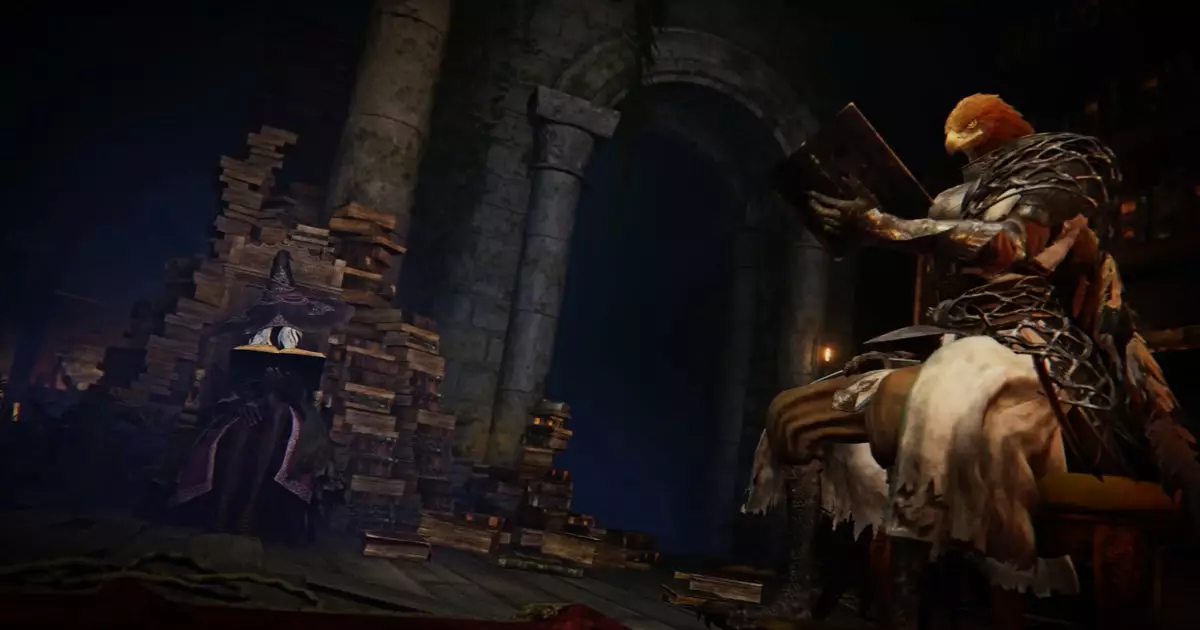In the vast landscape of gaming communities, few experiences are as engaging as delving into the intricate details of a beloved title. Elden Ring, a game celebrated for its rich lore and stunning visuals, has inspired countless discussions and analyses. Recently, an intriguing segment has emerged, centering around Nightreign, a spin-off that has captured the attention of a niche group of fans who scrutinize the game’s every aspect, particularly its character design. The focus of this scrutiny has turned towards Nightreign’s Guardian, a compelling figure cloaked in both mystery and feathered armor.
The Mechanisms of Character Design
The world of Nightreign introduces players to a host of characters crafted with the same artistic mastery that fans have come to expect from FromSoftware. However, the design choices, such as the transition from custom characters to pre-established archetypes, have raised questions about what lies beneath the surface. Notably, modder and dataminer Zullie The Witch has emerged as a critical voice in decrypting these design choices, offering insights that reveal more than what meets the eye.
Zullie’s investigations have highlighted a distinction between the character creation systems in Elden Ring and Nightreign. In contrast to the flexible, customizable avatars of its predecessor, Nightreign’s playable characters are limited to eight fixed models, potentially impacting the way players perceive their roles within the game. This shift has sparked debates on the implications of reduced player agency in character representation. While many may revel in the consistency of design, others lament the loss of personal expression, questioning whether automation in character development dilutes the immersive experience that FromSoftware games are known for.
The Guardian’s Alarming Asymmetry
At the center of this discourse is the Guardian, a formidable figure clad in mysterious feathers whose design has left fans in awe and speculation. The discussions surrounding the Guardian’s aesthetic reflect deeper concerns about identity and conformity within the game’s lore. Given his avian features, some fans have speculated about the presence of a hidden human face—perhaps a remnant of the characters’ connections to one another within the game’s narrative framework. However, Zullie’s findings have dispelled this notion, reassuring fans that no underlying human visage exists on the Guardian’s model.
This resolution may bring comfort to some, but it also extends the conversation about the nature of character design in Nightreign. By choosing not to hide a human face, FromSoftware seems to be making a bold statement about doubling down on their creative choices. The Guardians’ bird-like features signify an allegiance to the game’s sprawling, mythical atmosphere, casting aside any notions that might require conforming to more conventional gaming archetypes. Yet, this very choice is what also provokes questions about the identity of the characters themselves and their connections to the lore.
A Faceless Mystery: The Case of Wylder
Among the most enigmatic characters remains Wylder, whose design has become a focal point in the ongoing speculation within the community. Zullie’s meticulous analysis uncovered that beneath Wylder’s armor lies not a concealed face, but a “featureless silhouette.” This design choice adds layers of intrigue, suggesting that Wylder could embody qualities traditionally ascribed to faceless heroes, a trope popular in various narratives across cultures. Some fans have humorously dubbed him “the true John” of all FromSoftware titles, linking him to a legendary archetype of the everyman, likening his ambiguous identity to the concerns of anonymity prevalent in our modern world.
This absurdity presents an opportunity for players to interact with the narrative on a level that transcends mere gameplay. The suggestion that Wylder embodies a figure that is simultaneously everywhere and nowhere acts as a focal point for discussions about player attachment to character identity and narrative depth. Players are left to ponder not only what these characters represent in their own right but the metaphysical implications of facelessness in a society often characterized by its fixation on individual identities.
Engaging with the Game’s Depth
Nightreign is more than just a game; it’s a cultural touchstone that challenges players to engage with its narrative framework and character design in elaborate ways. As the community continues to pull apart each thread, we find that these characters—and their mysterious designs—spark conversations about what we seek from our gaming experiences: connection, identity, and ultimately, transition from player to participant in an unfolding story. Despite Zullie’s revelations providing exciting insights, the layers of intrigue surrounding these characters invite further exploration, ensuring that Nightreign will remain a fertile ground for discussion long after its initial release.
Thus, the act of questioning, analyzing, and speculating within gaming culture not only forms community bonds but also empowers players to delve deeper into the worlds they cherish. In the ever-expanding universe of Nightreign, one thing is certain: the vibrant tapestry of player engagement, with its ebbs and flows of curiosity, will continue to unveil new mysteries hiding beneath the surface.

